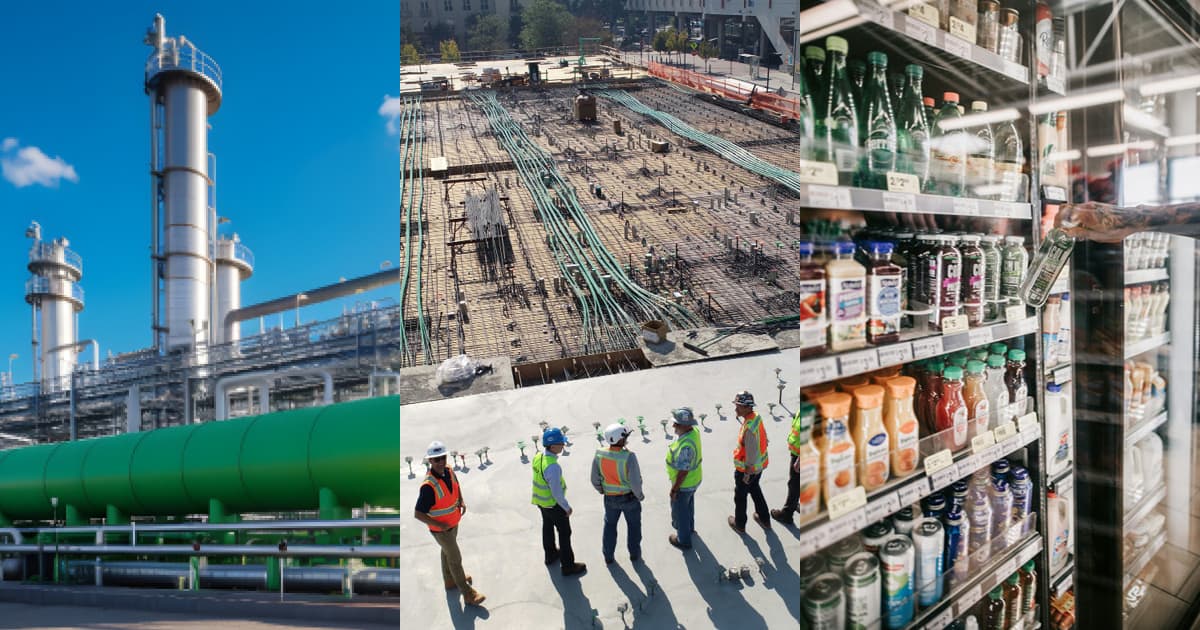The transition to compressed natural gas (CNG) vehicles to reduce operating costs, fuel America’s energy independence, and help secure the nation’s clean energy future is surging. Compared to gas and diesel powered vehicles, CNG vehicles reduce carbon monoxide up to 97%, hydrocarbon up to 75%, and nitrogen oxide up to 60%, while providing a highly cost-effective alternative. If you’re thinking about building a CNG station, there are several important considerations you need to take into account before you start your project. Here are the top five:
- Choose a site that matches your customer base and is close to necessary utilities
Identify whether you want to serve public or private customers or your own fleet. If you’re serving long-distance haulers or the occasional motorist, you’ll want to locate your station with easy on/off access to the highway. Alternatively, if your plan is to serve one or more local fleets or your own private fleet, a convenient well-lit location in an accessible part of town is a practical site. In either case, you’ll need to you have access to electric and gas hookups.
2. Identify your customers’ needs
If you’re planning to build a full-service public station for truckers and other casual customers, you may want to offer multiple fuel types such as LNG (liquified natural gas), diesel, and gasoline to serve a broader base of customers. You’ll need large bay areas for Class A trucks and fast-fill dispensers that make fueling a quick, intuitive, turnkey experience. Adding clean restrooms, a convenience store, showers, and a sit-down restaurant will enable you to generate multiple sources of revenue for your business.
3. Design your station based on vehicle fill type– fast fill or time fill
Fast-fill stations enable vehicles to randomly pull up and fill in minutes. The gas is drawn from pre-pressurized storage vessels that are stored above ground and must be ASME (American Society of Mechanical Engineers) certified. The vessels can be cylindrical in design but are more typically arranged in a three-bank cascaded configuration that can measure up to 25 feet in length. Adequate on-site space is needed for this equipment. The amount of storage capacity you’ll need depends on the number of vehicles you anticipate serving, how much gas each needs, and the vehicles’ fill-time requirements.
Time-fill stations are used largely by private and municipal fleets, and are best suited for vehicles with large tanks. The gas is dispensed through a time-fill manifold and generally takes from five to eight hours. Dispensing often occurs overnight when utility rates are lower. This method is best suited for vehicles that return to the station for simultaneous filling directly from the compressor. Time-fill stations use unmetered dispensers, have smaller compressors, little to no storage requirements, and typically cost less to build and maintain than fast-fill stations.
Overall, the design and cost of your station will be determined by the number of vehicles that fuel at one time, the amount of fuel the vehicles require, and the vehicles’ fueling windows.
4. Understand the equipment and components you’ll need
A typical CNG station is made up of a complex network of piping, valves, and other components that transfer pressurized gas from its source to vehicles. Regardless of fill method, the equipment you’ll need generally includes inlets, gas dryers to reduce the moisture content of the gas, compressors, an acoustical enclosure for noise control, if needed, dispensers, hoses, filters, and meters and storage infrastructure for your fast-fill equipment. Proper signage, lighting, safety equipment, and security fencing are also needed.
5. Partner with a certified CNG installer
As emission regulations continue to tighten, the transition to alternative fuel solutions for a range of transportation applications will continue. Due to its abundant domestic source, reliable horsepower, and cost effectiveness, CNG is one of the most promising alternative fuels available today.
Design and implementation of a CNG project requires the skills of numerous trained professionals –mechanical, electrical, structural, and civil engineers, as well as architects, geological specialists, surveyors, and installers. While there’s no one-size-fits all solution, there is a solutions provider that fits all you needs. If you’re looking to capitalize on the CNG fueling trend, contact us today for more information. We’ll help you build your state-of-the-art station.





